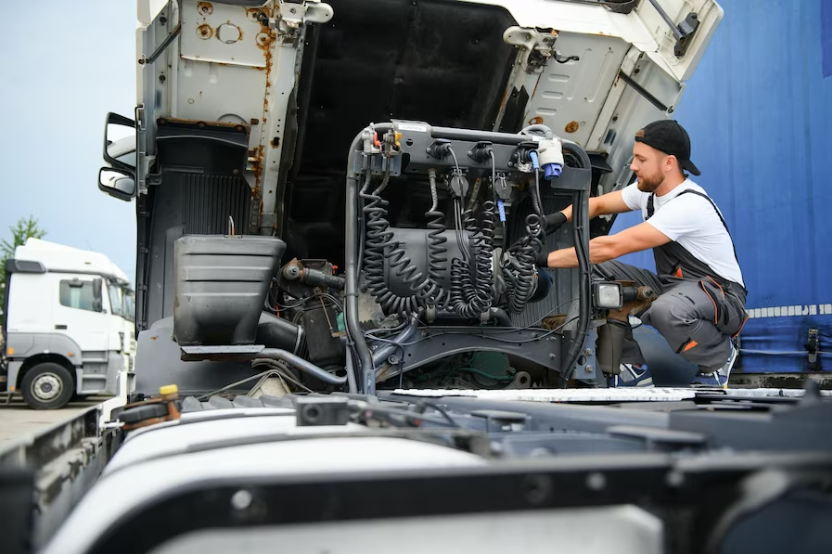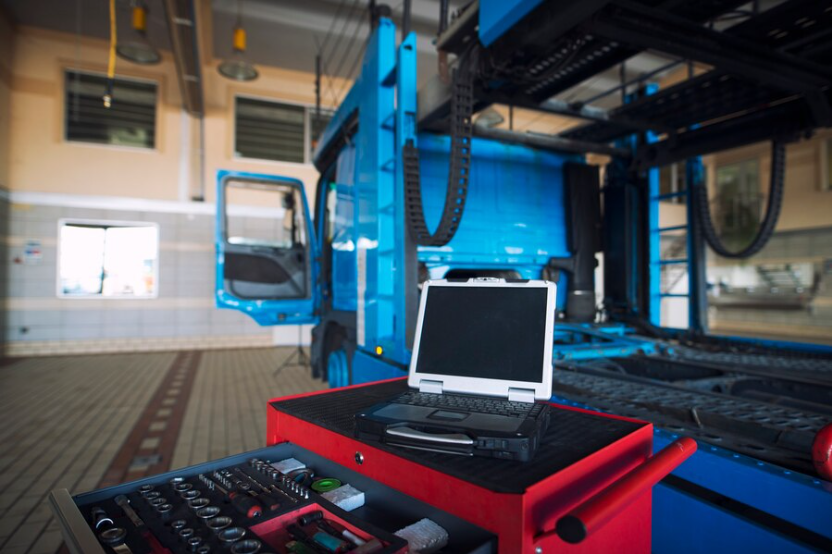Traditional Challenges in Truck Repairs
Over the years, traditional truck repairs have faced persistent challenges that have made life difficult for trucking companies. One major headache has been downtime – when trucks are stuck in the repair shop, they're not out there on the road making money. This downtime has a direct and hefty impact on the economic health of trucking companies. Imagine the financial strain when a fleet of trucks is out of commission for extended periods.
Another issue is the limited accessibility to specialized repair services. Trucks are unique, and not all repair shops have the expertise or equipment to meet their needs. This scarcity of specialized services forces truck owners to spend time and effort searching for the right repair shop, often leading to delays in getting their vehicles back on the road.
Moreover, the high costs associated with manual diagnostics and labor have been a constant burden. In traditional repair, identifying and fixing problems requires skilled human labor, making the procedure time-consuming and expensive. Truck owners have faced substantial bills for diagnostics and repair work, putting a strain on their financial resources.

Emerging Technologies in Truck Repairs
Telematics and Predictive Maintenance
Telematics systems gather real-time data from truck sensors, enabling predictive maintenance. This technology anticipates overall, and HVAC system repair needs before failures occur, optimizing maintenance schedules and significantly reducing unplanned downtime. It’s particularly beneficial for fleet maintenance technology, ensuring operational efficiency and longevity of the vehicles.
3D Printing for Parts Manufacturing
3D printing revolutionizes parts availability in truck repairs by enabling on-site, on-demand production. This reduces dependence on supply chains and significantly cuts down waiting times for parts. It's especially useful for manufacturing unique or out-of-production parts, offering a cost-effective and timely solution for repair needs.
Augmented Reality (AR) for Diagnostics and Training
AR technology overlays digital information onto the physical environment, assisting technicians in diagnosing and repairing complex systems. It provides interactive, step-by-step guides and can highlight potential problem areas, improving repair accuracy. AR also enhances training, allowing technicians to practice in a virtual environment.
Advanced Diagnostic Tools
These tools use sophisticated algorithms to analyze truck systems and quickly pinpoint malfunctions. They offer a more precise and comprehensive diagnosis than traditional methods, reducing guesswork and time spent identifying issues. This leads to more effective truck repair and minimizes vehicle downtime.
Robotic Arms
Robot arms now do intricate jobs like painting and welding. To guarantee constant and high-quality repairs, these robotic devices provide accuracy beyond what humans can. They also help make the workplace safer by taking care of potentially dangerous activities, which lessens the likelihood of accidents and injuries.
Internet of Things (IoT) in Fleet Management
IoT connects trucks to a network, allowing for remote vehicle health and performance monitoring. It provides valuable insights into maintenance needs and operational patterns. This connectivity enables fleet managers to make data-driven decisions, improving overall fleet efficiency and reducing maintenance costs.

Artificial Intelligence (AI) in Fault Detection
AI analyzes complex data sets to identify patterns that indicate potential problems. This preemptive fault detection is crucial for avoiding major repairs and extends the life of the truck. AI's predictive capabilities are increasingly being used to automate and improve the accuracy of maintenance processes.
Remote Software Updates and Calibration
This technology allows for wireless updates and calibration of truck systems, reducing the need for physical service center visits. It ensures that trucks always operate with the latest software, optimizing performance and compliance. This is particularly important for managing large fleets, offering a time-efficient and cost-effective maintenance solution.
Future Trends and Innovations
Autonomous Repair Robots
Revolutionary strides are on the horizon for the technology truck repair sector. The advent of autonomous repair robots has the potential to dramatically change the maintenance industry by cutting down on waste and increasing productivity. The ability of these robots to detect and repair problems on their own would greatly benefit truck fleets by increasing efficiency and decreasing downtime.
Quantum Computing for Complex Problem Solving
Truck maintenance, scheduling, resource allocation, and logistics optimization are all complicated issues that quantum computing is expected to solve in a big way. The capacity to handle large volumes of data simultaneously simplifies decision-making in complex repair situations.
Nanotechnology in Materials and Maintenance
Innovative materials with increased resilience and the capacity to mend themselves can be introduced to the market via nanotechnology, reshaping the materials and maintenance industries. Including nano-sized particles can increase the coating's resistance to wear and corrosion. Furthermore, sensors enabled by nanotechnology can monitor vehicle components in real-time, allowing for preventative maintenance and preventing any breakdowns.
Final Thoughts
Innovative tools are ending the days of oily stains and wrenches in the automotive repair sector, which is seeing a dramatic change. Modern truck repair shop software allows for more efficient, quicker, and cheaper vehicle repairs via predictive maintenance that can foresee problems before they happen and on-demand 3D-printed components. Thanks to advancements like quantum computing and autonomous repair robots, even more efficiency, robustness, and a smooth ride for every mile are on the horizon for truck maintenance.























